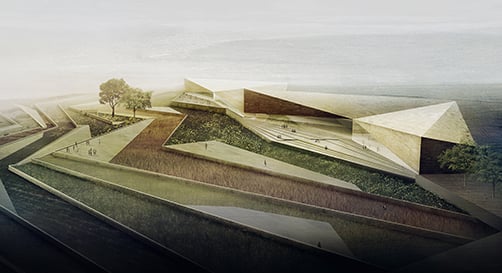
New cultural institutions often run into unexpected difficulties and setbacks during construction, but the new Palestinian Museum in the West Bank is facing a uniquely threatening challenge because of the worsening fighting between Israel and Palestine.
According to director Jack Persekian, construction on the building, which began in April of 2013, will not be slowed by the nearby fighting. The museum, located on the Birzeit University campus north of Ramallah, has been designed by Heneghan Peng, an architectural firm based in Dublin.
The building is expected to cost $19 million and be finished by September 2015, with a projected opening in early 2016. To date, the building’s skeleton has almost been completed. Funding for the project comes from London-based non-profit the Welfare Association, which is dedicated, according to its website, to “the reduction of poverty for marginalized Palestinian communities.”
“The current conflict makes coming to the museum building fairly unattractive for everyone,” Persekian admitted in an interview with the Art Newspaper. The latest round in the conflict was sparked on July 8, and has quickly escalated, killing an estimated 1,115 Palestinians and 55 Israelis.
“In general, in Palestine we are constantly aware of the security issues, and we know all too well that in this situation everything is vulnerable,” Persekian said, admitting that even before the recent intensification of the fighting it could be difficult to access the museum site. “The impediments to movement around Palestine remain; for Palestinians, given the documents they carry and the places they live, this looks unlikely to change.”
As the museum prepares for the 2016 opening, it is compiling an online multimedia timeline recounting Palestinian history dating back to the mid-19th century. It is also curating its inaugural exhibition, “Never Part,” which Persekian describes as providing “an alternative narrative of the history in modern times” from the point of view of the ordinary Palestinian.
“I must stress that the museum does not consist of a single building in Birzeit: in its essence, the museum is really about the network we are creating between the Palestinian communities here and across the world,” Persekian says.